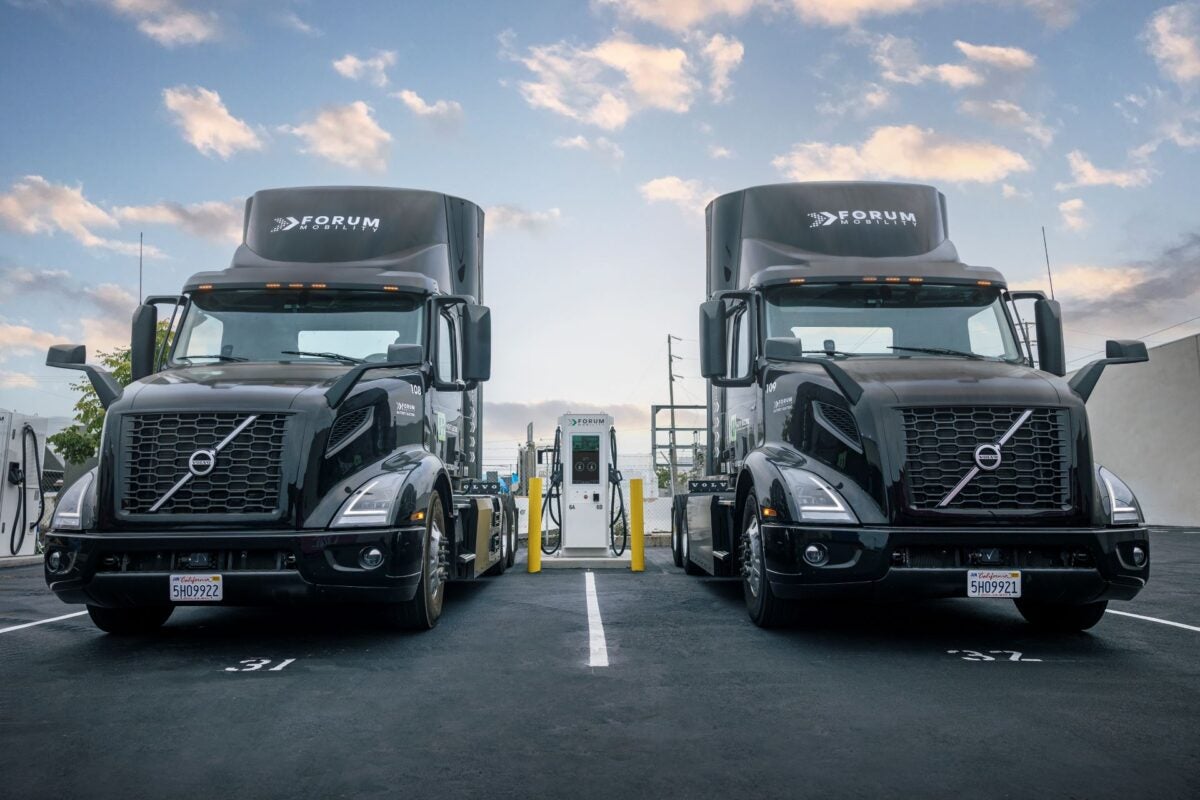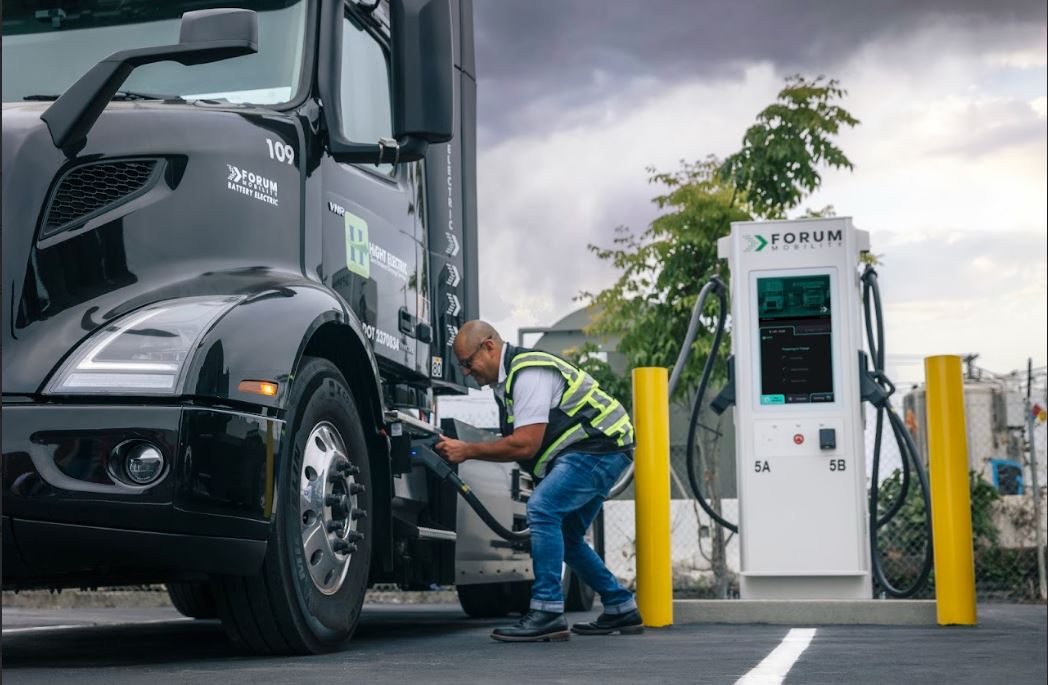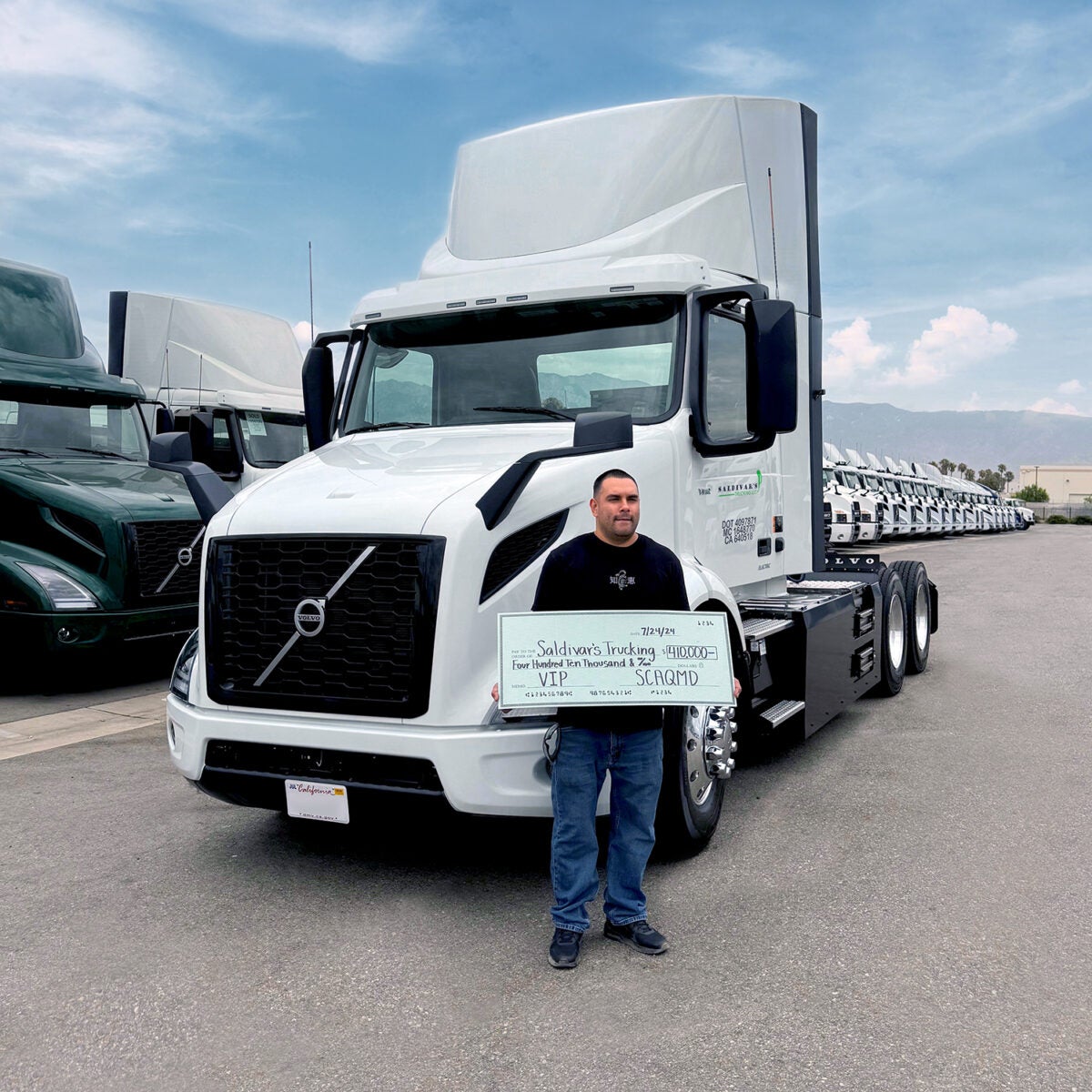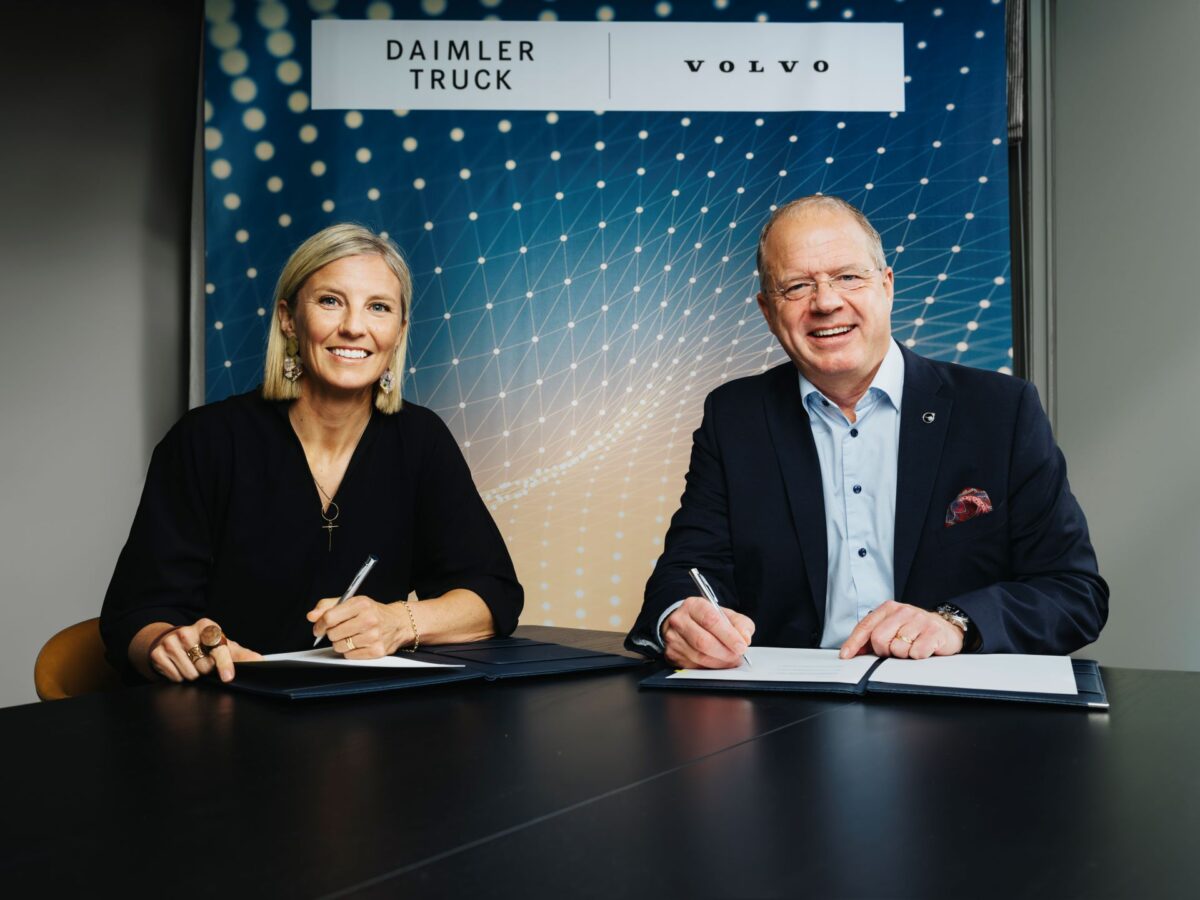Climate United’s plan to spend $250 million to purchase 500 Class 8 electric trucks makes a great headline. But beyond the benefit to owner-operators and small fleets, the impact involves the future of zero-tailpipe-emission freight hauling.
More than cleaning up the ports
Climate United is stewarding a $6.97 billion grant of Inflation Reduction Act (IRA) funds awarded by the Environmental Protection Agency. The immediate goal is to help clean up the nation’s ports, where older and dirtier trucks spew enormous amounts of smog-forming pollution waiting to enter and leave.
California allows only zero-emission trucks to come and go at the ports of Los Angeles and Long Beach for free. Diesel-fueled trucks pay $10 to a Clean Truck Fund per twenty-foot equivalent unit they haul. The fees are used to help reduce the cost of electric trucks. By 2035, the state has mandated that only zero-emission drayage trucks operate in the ports.
The addition of 500 electric trucks over the next three years will help that cause by replacing legacy diesel trucks. The purchase also could help boost slowing adoption of battery-powered trucks. Smaller fleets will benefit from leasing the trucks from Climate United. They will qualify for most of a $40,000 IRA tax credit for which they might otherwise be ineligible.

Establishing a virtuous cycle
But the real benefit is that Climate United will begin to establish how much a used electric truck is worth. Until the used value of an electric truck is known, a market is non-existent. Banks typically shy away from lending for an asset without a defined future value.
Even with huge incentives to reduce the upfront price of an electric truck, owner-operators rarely can secure financing. Electric trucks cost two to three times as much as a diesel truck.
“No one’s financing trucks because effectively no one has ever sold a used heavy-duty electric truck before,” Michael Grossman, chief investment officer of Climate United, told me. “We’re buying the trucks in order to absorb that risk.”
I discussed the residual conundrum with Rich Mohr when he was senior vice president of North America ChargePoint.
“Three years ago, the biggest risk around fleets adopting electric vehicles was the residual value and the [anticipated] life of those vehicles,” Mohr told me in May. “Every single fleet [was] depreciating these things down to nothing because we have no clue what they’re going to be worth.”
Making the math work
Here’s how Grossman sees establishing residual values of electric trucks.
“In order to make sure the total cost of [electric truck] operations is the same as it is for a diesel, you’re not going to be able to pay back 100% of the cost of that truck over four or five years. You might be able to pay back 30% of it. And if you pay back 30%, then the residual value remains with us.
“And then we will, at some point in the future, sell that truck, establish a market residual value. Then real financiers, not little funky funds like ours, will come in and lend against the structure. If we buy 500 trucks and start selling those trucks [used] 3 ½ or four years from now, over the course of several years, we establish a secondary market value.”
Most electric trucks offer battery warranties of eight years. A first owner could operate for four years leaving enough battery life for a second owner.
“You take that residual value, low-cost capital, the tax credit and wrap those all up in a truck financing,” said Matt LeDucq, CEO of truck-as-a-service and infrastructure developer Forum Mobility. “We can now deliver a lot of trucks at parity [with diesel]. And get rid of the chicken-or-the-egg debate that’s been going on for years.”
Creating and preserving American jobs
That virtuous cycle extends to whose trucks get purchased. Climate United wants them to have local parts and components, helping create or preserve American jobs. Daimler Truck North America, Volvo Trucks North America and Paccar Inc. all would seem to qualify. Their nascent production of electric trucks occurs in Oregon, Virginia and Texas, respectively.
Climate United chose Forum Mobility as its charging partner in part because Forum has a $400 million joint venture with CBRE Investment Management.
Adding 500 electric trucks lets Forum advance its network of charging depots at ports, along freight corridors and near distribution centers. A 9-megawatt facility opens in December at the Long Beach Container Terminal. It is capable of charging 96 Class 8 trucks at a time – if 96 electric trucks needed simultaneous charging.

Engaging with owner-operators
“We announced a handful of deals in the last month alone. But they’re four or five trucks at a time,” LeDucq said. “Four or five trucks at a time doesn’t send that clear signal. But 500 trucks certainly does.”
VTNA and its dealer TEC Equipment in October announced Saldivar’s Trucking as its first U.S. independent owner-operator to deploy a Volvo VNR Electric truck for drayage operations. Saldivar’s received $410,000 in funding from the California Air Resources Board’s On-Road Heavy-Duty Voucher Incentive Program. TEC Equipment worked out other details.

“We’ve engaged owner-operators since we started the business,” LeDucq told me. “We’ve always had the mission of making sure that any fleet can equitably make the transition [to an electric truck]. “The game changer is we can now efficiently finance a lot of trucks to any fleet.”
Aurora delays driverless commercialization until April
Aurora Innovation began hedging on the number of trucks it planned to field without human drivers earlier this year. Now the startup is delaying the commercial launch of driverless trucks until April 2025.
Aurora solidified its leadership in driver-out capability in March when It offered rides to analysts and media on a closed course in Pittsburgh capped at 35 mph. In driver-supervised freight runs on I-45 in Texas and driverless testing, Aurora rolls at 65 mph.
The company originally spoke of launching up to 20 Peterbilt 579 Class 8 trucks upfit with its Aurora Driver system by the end of the year. That will now be up to 10 trucks with one to start and transitioning others to follow. Aurora expects to expand to “10s of trucks” by the end of 2025.
In a closely watched race to claim to be first, rival Kodiak in July pulled back on plans for highway autonomy this year. It pivoted to moving fracking sand autonomously at low speeds in the Permian Basin in West Texas.
On its third-quarter earnings call Wednesday, Aurora CEO Chris Urmson said the company needs more time to refine and validate its system for surface streets and unexpected occurrences in construction zones. Aurora’s internal Autonomous Ready Measure for its Dallas-to-Houston route stood at 97% at the end of October.
“Aurora could have performed a gimmicky, overnight autonomous truck run to give investors confidence that the system works,” Canaccord Genuity analyst George Gianarikas wrote to investors on Thursday. “We are glad they didn’t. We actually think the system already does work — and management has taken the mature approach to making sure it is built to last.”
Briefly noted …
Daimler Truck and the Volvo Group have formalized a second joint venture to work on software-defined vehicles. They formed the cellcentric fuel cell JV in 2020.

Autonomous truck developer Plus says it has completed its initial phase of collaboration with Scania, MAN and International, testing SuperDrive-equipped trucks in the U.S. and Europe.
Torc Robotics says it has been testing its driverless trucks at 65 mph in closed settings, a key step on its way to removing drivers from Torc-equipped Freightliner Cascadias in 2027.
With about $200 million on hand at the end of the third quarter, electric truck maker and hydrogen distributor Nikola can last through Q1 2025, CFO Tom Okray told analysts on Thursday.
Truck Tech Episode No. 89: Natural gas proves its mettle in powering Shell Starship
That’s it for this week. Thanks for reading and watching. Click here to subscribe and get Truck Tech delivered to your email on Fridays. And catch the latest episodes of the Truck Tech podcast and video shorts on the FreightWaves YouTube channel. Send your feedback on Truck Tech to Alan Adler at aadler@firecrown.com.







